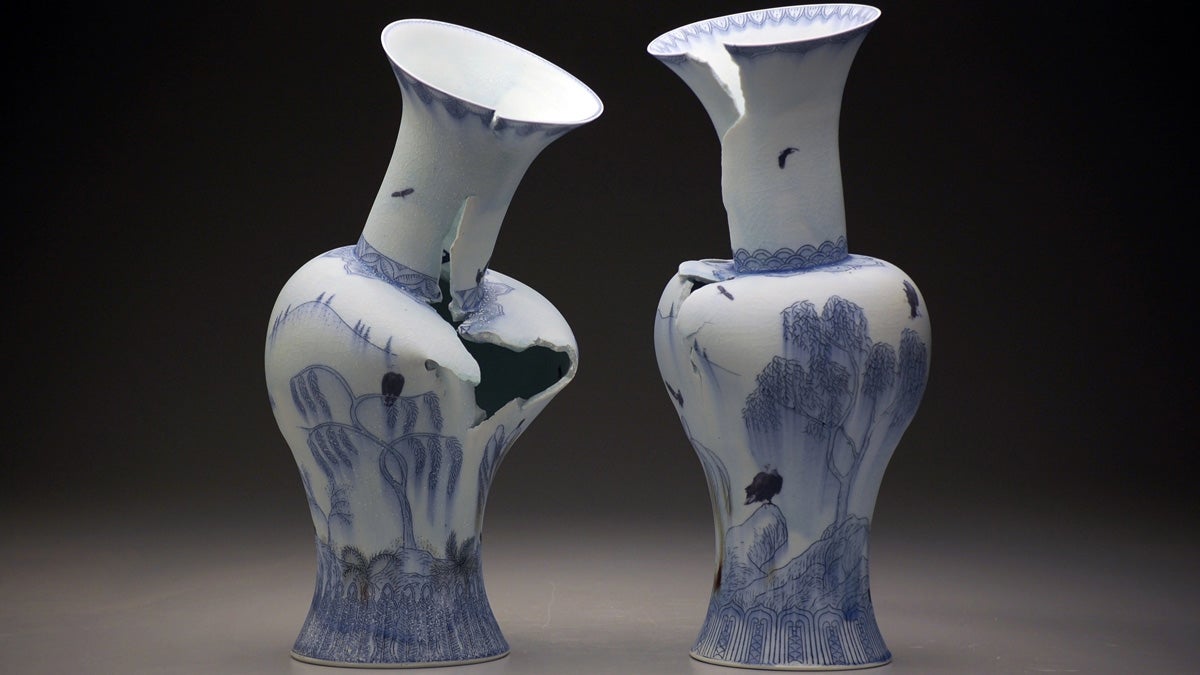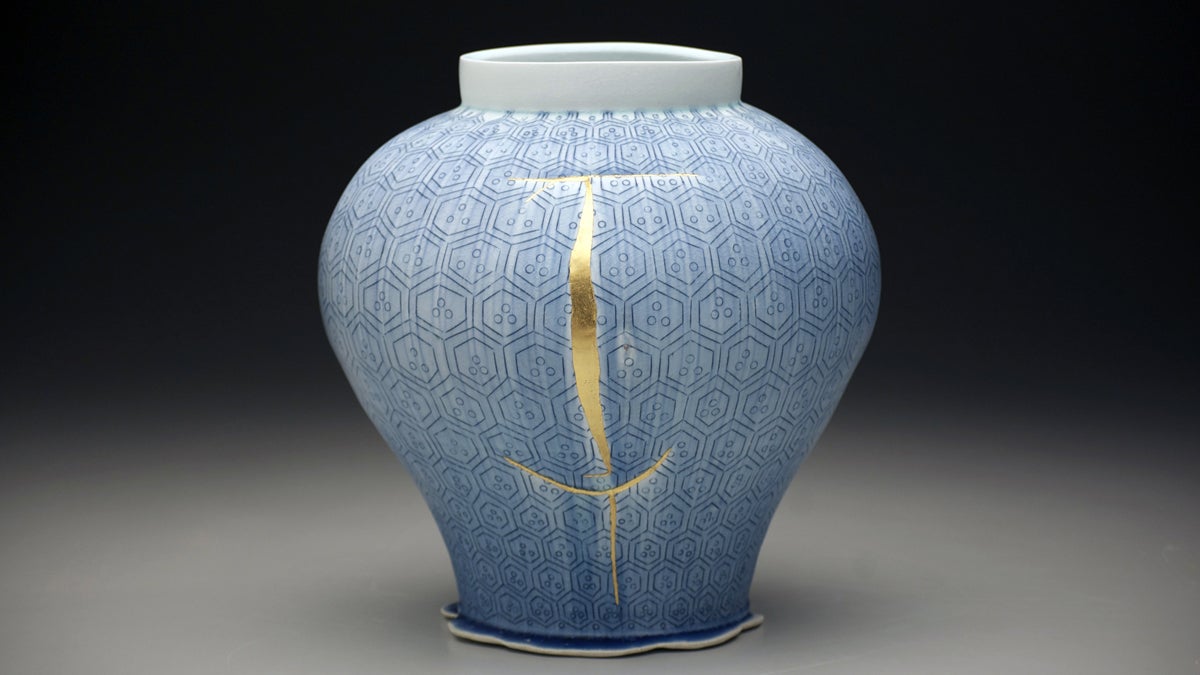After the election, America has political fractures to heal

On display at Washington
I spent last week in Washington, D.C., a place that, depending on which way you swing, is either a roiling swamp of dysfunction or a gleaming beacon of democracy.
It’s both. It’s neither. It’s a city where 672,228 people drop their kids at day care, squeeze onto the Metro, queue up for coffee, rush to work.
It’s a city where 16 homeless women sip too-sweet lemonade while listening to a librarian read Raymond Carver’s short story “Cathedral” at a shelter on the desolate grounds of the former D.C. General Hospital.
It’s a city where tourists with selfie sticks pose in front of Abraham Lincoln’s sequoia-sized knees. A city where interns zip around on red Capital Bikeshare cycles. Where a man mutters to himself while making a pencil sketch of a forest inside a church-run basement activity center.
People and stories
I visited less than a week before a historic election. (First female major party candidate! First, um, reality show host to use the phrase “bad hombres” in a televised debate!), and I expected to hear a rising crescendo of anticipation, a murmur of all that hangs in the balance.
But the most profound conversations I witnessed occurred in silence.
While running across the P Street Bridge, I spotted a bus shelter ad showing stark black and red labels: “Freedom-Loving. Feminist. Muslim. Voter” and the reminder that, come Tuesday, “only one label counts.”
In an election season notable for its R-rated name-calling, this public service campaign reminds us that we are — collectively and individually — complicated, and that identity politics must transmute into action in the voting booth.
Meantime, the windows of a souvenir store offered a provocative dialogue. On the left, a stack of Hillary nutcrackers (tongue-in-cheek commentary on the emasculating powers of “nasty women”?), alongside t-shirts with Clinton’s face grafted to the iconic Rosie the Riveter image, and the slogan, “She Can Do It.” On the right, Trump bobble-head dolls and scarlet ball caps reading “Make America Great Again.”
On the left, more shirts: “Make history,” with the “his” crossed out and “her” scripted in. To the right, Trump’s smirking mug on an actual, well, mug, marked down from $9.98 to $4.99.
For four days, I crisscrossed the city, from Petworth to the Tidal Basin, leafy Woodley Park to museum-dotted Constitution Avenue, from the Greek portico that surrounds Lincoln’s memorial to the looped razor wire of the D.C. Jail.
I visited a library, a senior center and two homeless shelters, all in the name of a government-funded program (thank you, National Endowment for the Humanities) that aims to foster community and a love of literature through discussion of short stories. I was there to evaluate four of those programs, all led by librarians trained in the People & Stories method of deep listening and open-ended questions.
Do we really see?
In “Cathedral,” a sighted man begrudgingly welcomes his wife’s longtime friend, a blind man, into his home. But the sighted man is blinkered by stereotypes and jealousies — so dim to the possibility of connection that it takes several shots of Scotch (this is a Carver story, remember), a joint, half a strawberry pie, and a feat of imagination to nudge the narrator out of his bigoted funk.
At the shelter on the former hospital grounds, one woman listened intently to the story, nodded and finally spoke: The blind man had more life than those that could see …. Do we really see? It’s a question we all ask ourselves.
Or should, anyway. Nine miles to the west, people scampered or shuffled up the steps to pose with Lincoln, who gazed, stoic and pensive, across the Tidal Basin, through the Washington Monument to the Capitol. What would Lincoln think of this strange election, its caustic discourse, the clown in the suit who is the very opposite of “honest”?
Better the lawmakers should be looking his way, toward the Great Compromiser himself. Because Tuesday, as everyone knows, is not the end.
The winners on Nov. 8 could start with a tour: They could spend a day at the Tubman emergency shelter. See how far a week’s SNAP benefits would go at the Whole Foods on Wisconsin Avenue. Eavesdrop on a People & Stories group; let stereotypes drift to the floor with each turn of the page.
America isn’t a cesspool, nor is it purely “the last, best hope of earth” (Clinton, quoting Lincoln). Our 16th president’s stately memorial stands on what was, 120 years ago, a mile-wide stretch of dredged mud. We will always be a work in painful progress. We’ll get further as soon as we stop labeling, start listening, and embrace flux as the name of the game.
‘Golden repair’
In my off-time, I biked to the Renwick Gallery: an exhibit of Japanese-style porcelain vases crafted by Steven Young Lee. This artist likes to rip the clay while it’s still leathery and manipulate the vessels into anthropomorphic forms.
One vase bent over as if in cramp. Another’s neck craned from slumped, world-weary shoulders. In a third, Lee had slashed the pot’s belly, then healed the incision with a stunning graft of gold — a Japanese technique called kintsukuroi, or “golden repair.”

This election season has revealed our flaws: our divisiveness, our fear, our propensity to bully and label and yell. Our next president (let it be the nutcracker, not the bobble-head) will need to give more than a nod to those rifts.
If she’s got a spare minute between briefing papers, she should grab a red bike (the security detail knows how to cycle, right?) and ride to the Renwick for a glimpse of Lee’s “Diptych Eagles” (pictured above), two vases with their jagged openings face-to-face. They look to be in painful conversation. Leaning toward each other, as we must. All mouth. All ears.
WHYY is your source for fact-based, in-depth journalism and information. As a nonprofit organization, we rely on financial support from readers like you. Please give today.



